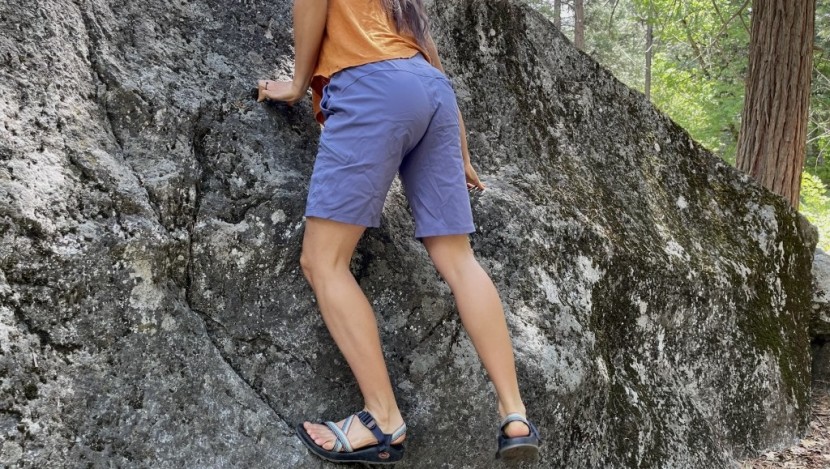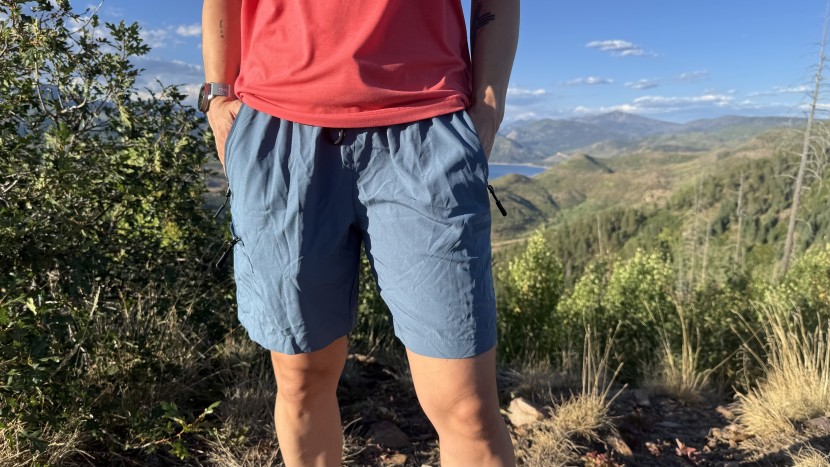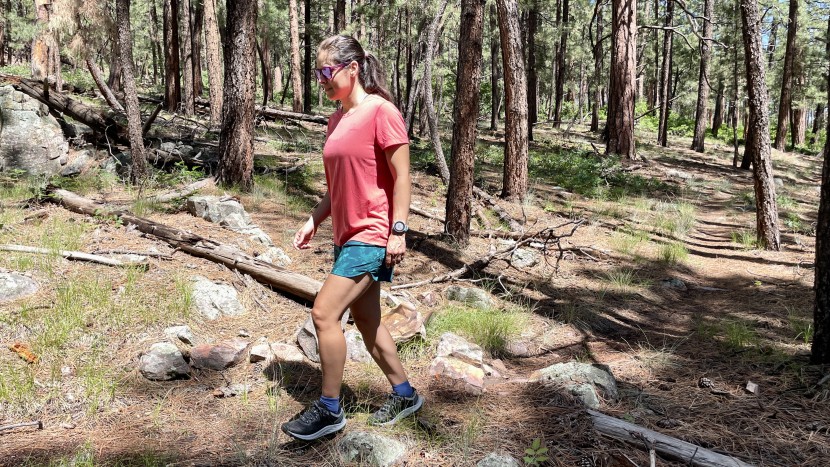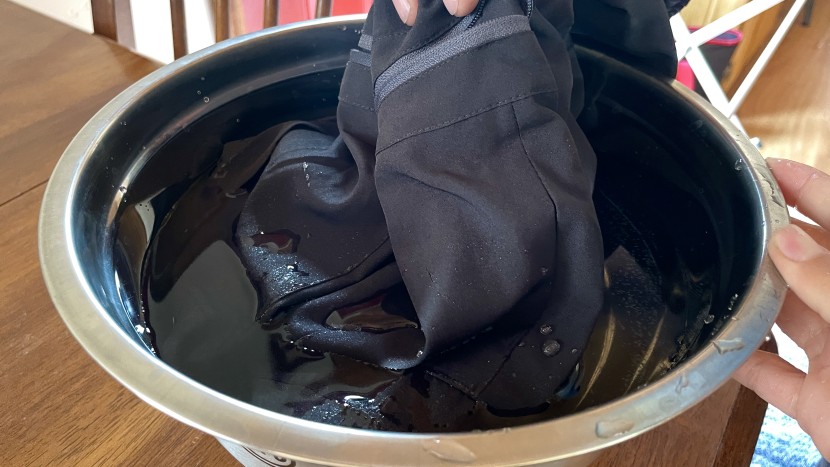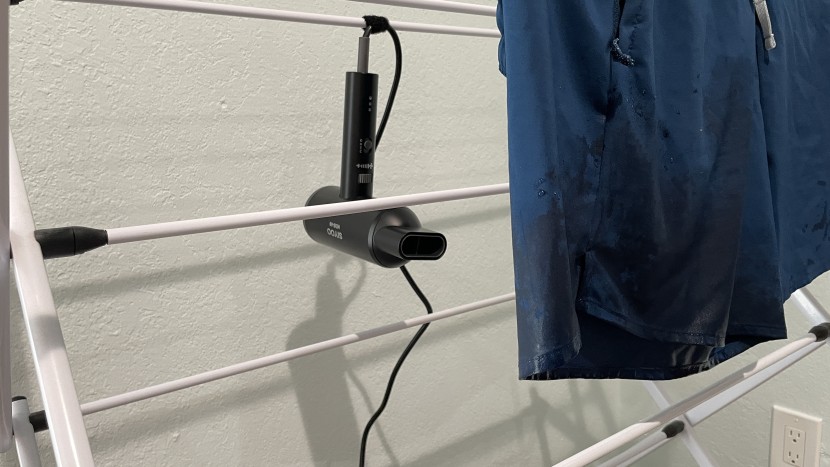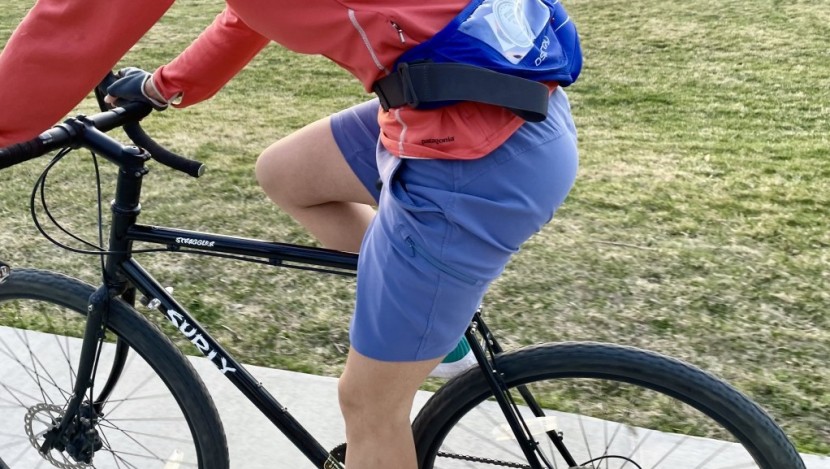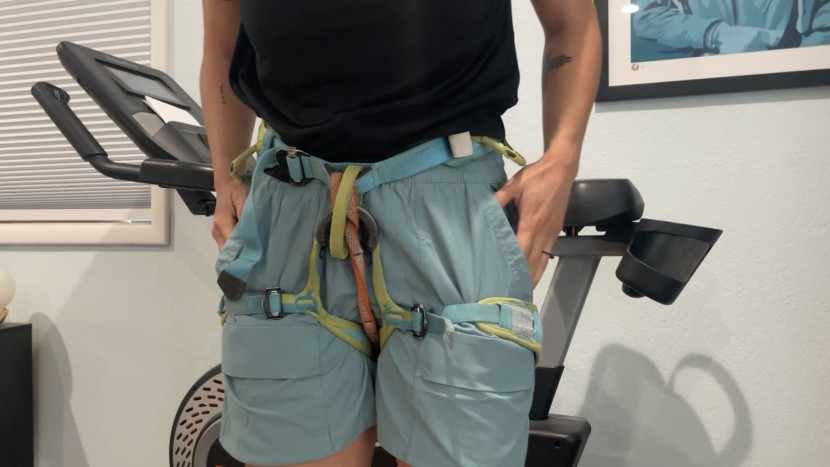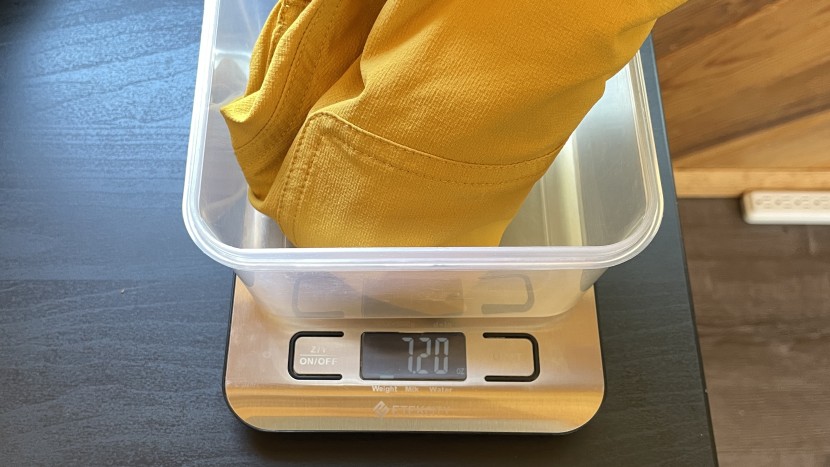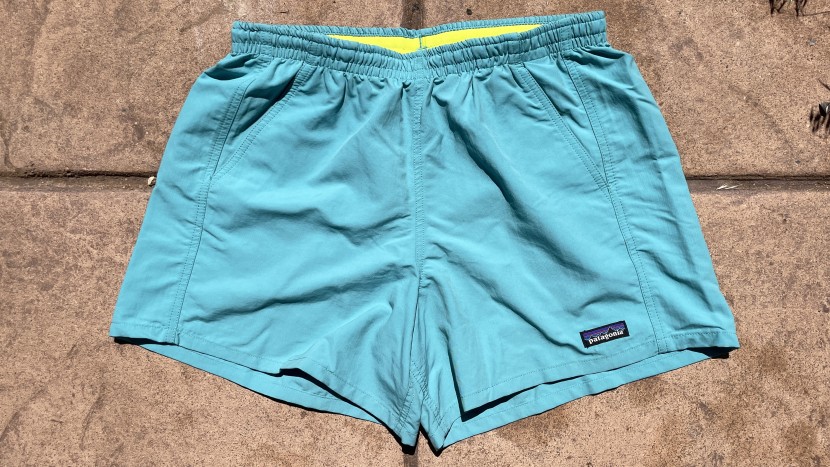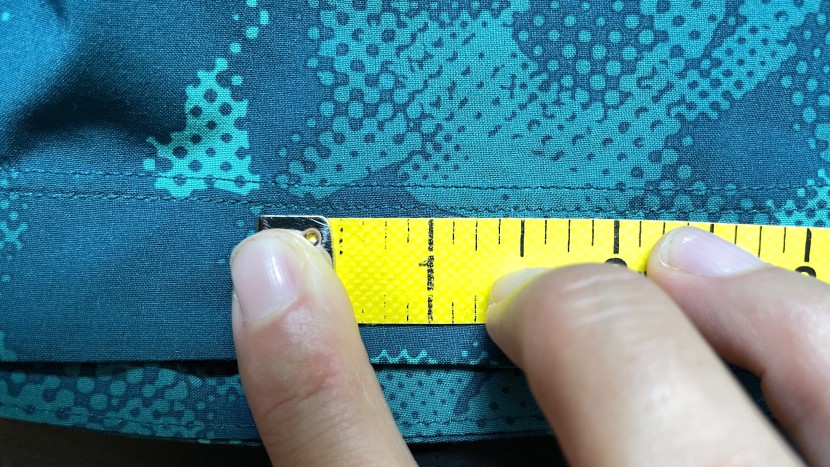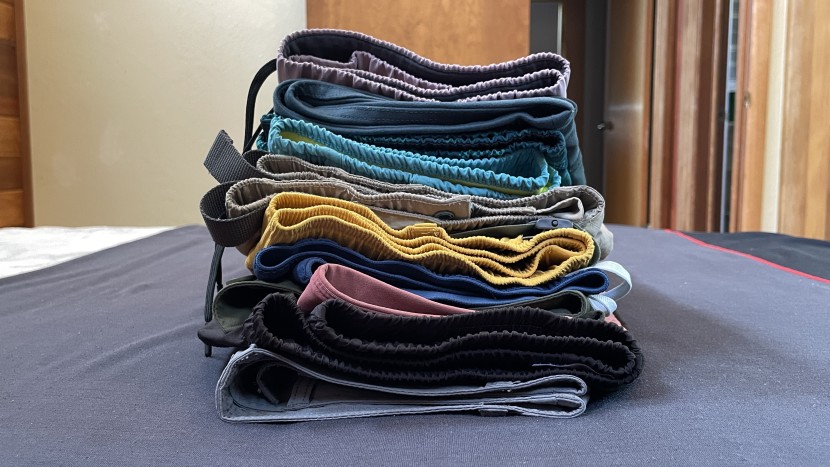To test these hiking shorts, we do as much hiking and moving around as possible. From mountainous and rocky approaches to the flattest of dirt or paved trails, we seek to embody all modes of hiking. After creating a list of what we believe makes a top-notch piece of trekking apparel, we have prioritized certain aspects more than others. For example, comfort and mobility are the most important factors, in our opinion. When it comes to being outside all day, no matter the terrain, we want effortless movement and confidence in the way the shorts fit and make us feel. Next in line, the fabric itself comes under scrutiny. We assess its breathability and flex, and then perform various tests to determine how quickly the fabrics absorb water and then dry once soaked. We also consider the versatility of the shorts (which includes notes on style) and any extra features each one may offer. To help truly distinguish one pair of shorts from the other, we capture data across a series of submetrics before averaging them and evaluating them against our test experiences to come up with a final score.
Comfort and Mobility
The first thing we do is wear each pair of shorts casually for the whole day, even if we are sitting in front of a computer or running errands. This allows us to get a general feel for the shorts before taking them to the trails. We pay attention to how they sit against our bodies and whether or not we have to adjust them periodically for comfort. We also consider sizing and how they fit our hips and thighs. When it comes time for the actual hiking, we pay attention to important mobility requirements, such as the ability to high-step and stretch our limbs comfortably, no matter the intensity.
For our back-to-back testing, we do five deep squats and then scale a flight of stairs in every short, one after the other, to gain a good hands-on feel for how the shorts perform in this metric. The pairs that aren't as flexible will often produce resistance to our movements, which, in turn, creates discomfort or loss of mobility over certain terrain. We dock points in our scoring for such results. Lastly, we take note of things like waistband design and whether or not the band, or any special features, affects our comfort. This includes things like pocket design, pocket accessibility, and whether or not our mobility changes when carrying a phone in one.
Fabric Performance
The type of material each short is made of is scrutinized for this metric. Typically, synthetic blends are the most breathable and moisture-wicking. We research the material each pair of shorts is made of and then pay attention to how well that material breathes during our hikes, as well as how effective the cut of the shorts proves to be in facilitating moisture-wicking or ventilation on hotter days. When we sweat, we want to see whether or not the shorts trap our body heat close to the skin or if they can help regulate our temperature to keep us dry and cool. Usually, the waistband is an area that suffers from a lack of breathability, particularly when wearing a pack with a hip belt. For this reason, we take note of any extra venting features incorporated into the design, like perforated holes, mesh, or wide and roomy leg openings (that help airflow in and out of the shorts). These aspects add to the short's overall score in this metric.
For our lab-like testing, we start by performing a soak test. We take one pair of shorts and place a 4-inch section of fabric from one of its legs into a container of water, then time how long it takes for the fabric to become completely soaked through. Once we've noted the time it takes to soak, we then leave the fabric in for a full three minutes. Sometimes, impressively, the time it takes to fully soak takes the full three minutes. This is often due to a DWR (durable water repellent) treatment on the fabric. After the three minutes, we move the shorts to an indoor drying rack to begin the drying test. The indoor drying rack is purposefully set up without direct sunlight. Attached to the rack is a blow dryer, which we set to “air-only” (no heat). This is meant to simulate how well the fabric will likely dry on the body while hiking when removed from direct sunlight, but the fabric still receives consistent airflow. We rotate the shorts occasionally to again simulate a more well-rounded airflow from hiking. We then record the time it takes for the fabric to completely dry to the touch. This helps us gauge “quick-drying” claims often made by manufacturers. Once the shorts are dry, we move on to the next pair, repeating the entire process from soaking to drying.
In general, classic tests like holding the fabric up to the light to see how much light comes through or placing that fabric gently against our mouth to see how well we can inhale through the fabric also come in handy. Doing so may help with determining subtle differences between each model. Although we used to assess features as an independent metric, we've recently made a change, now integrating such evaluations into metrics that consider the value any single feature brings to the design, be it comfort and mobility, fabric performance, versatility, or strength in construction. For example, we will assess breathability features and extras like sun protection (UPF rating) or odor control as a part of this Fabric Performance assessment. Stain resistance is something we take into account as a part of our consideration of construction quality. Overall, we tend to score shorts a little higher if they are built with useful fabric tech that improves venting, breathability, and the overall fabric experience.
Versatility and Style
A day in the life of a hike often looks like this: after long miles on the trail, you are happily tired, hungry, and eager to relax and enjoy the accomplishments of the day with friends, so you plan a pitstop somewhere in town on the way home. It is in these scenarios that it may matter to you whether or not the clothing you've chosen for your hike is equally as appealing and appropriate to wear around town. We find that high-tech, athletic designs are often not as mainstream “fashionable” as those designed with a more classic or vintage appeal. Then again, style is a very subjective subject, and outdoor wear has certainly found its way into common culture in recent years, appearing in many places where it may not have been welcomed before. Similarly, there are many shoppers who seek shorts that will serve well for other activities beyond just hiking, or across shoulder seasons when the temperatures are more variable throughout the day. A single well-designed pair of shorts, even if it costs a bit more upfront, can end up being your go-to clothing for regular hikes and for days out in a kayak and for casual lunch meetups. Maybe a single pair can be the perfect addition to your luggage when you know a diverse range of activities are planned for a vacation. Such versatility can be a valued feature in any type of outdoor apparel, so we take the time to assess every pair of hiking shorts through this lens as well.
Scoring for style is a little tricky, but when blended with overall versatility, it paints a broader picture of how useful a pair of shorts is or can be. We ask questions like: Can they be worn in shoulder seasons? Are they a good choice for other activities like cycling, rock climbing, or even trail running? Are these going to look the part at the local brewery post-hike? Being able to wear the shorts for more than just trail activities is going to give any pair a score boost in this metric. We pay close attention to which ones even appeal for use during various other activities: in-town errands, running, rock climbing, foam rolling, gardening, cycling, or workouts in the gym. If we feel any of the shorts are not practical at all for these other activities, we make a note of why. If they seem applicable, we'll put them through the basic motions to see if it's a reasonable assessment. While it's nice to be multi-functional, we nonetheless prioritize hiking as a priority for the design. Lastly, we consider any specialized washing or drying protocols the shorts may require, which can limit how easy it is to take care of them.
Construction Quality
For this metric, we engage in a couple of different tests. First, we run our paperclip snag test. To start, we straightened a paperclip, leaving its blunt end exposed and easy to work with. We then picked a spot on the shorts to drag the end across several times (both general fabric and over a seam), noting what happened to the fabric and stitching as a result. Do marks appear? Are they small or large? Does it fray or pill either the fabric or the stitching? Did it create any tears or an actual hole?
The next test we do is one of measurement. We sample multiple seams on each short and measure how many stitching loops there are per inch. We have found that there can be a range of stitching densities featured on every model. We capture that range in our spec table for comparison's sake by listing the minimum and maximum numbers of the range. We use the following general guidelines to assess relative quality: a density of 16 or more stitches per inch yields excellent results with sturdy, well-sealed seams; 12-15 per inch is still great but, of course, results in slightly less strength in the seam. The assessment drops from there, with good seam density marked by at least 10 stitches per inch. Once the density becomes less than 10, the product drops into poor territory for its construction quality. Sometimes, a pair of shorts will feature a poor minimum number while simultaneously featuring a great maximum density. We look at both ends of the spectrum when scoring and try to come to an average consensus that reflects the overall strength of stitching on the garment. In addition, we note whether certain high-stress areas, such as pockets, button closures, zippers, etc., have been reinforced with extra stitching to ensure strength in use.
Lastly, we pay attention to any atypical wear and tear on the garment and whether its fabric wrinkles easily. Again, comfort and mobility reign supreme over this metric, but it's still important to consider how well each model is made. We hope the metrics we've established as top priorities help you take a closer look at any of the pairs you may be considering for purchase.


